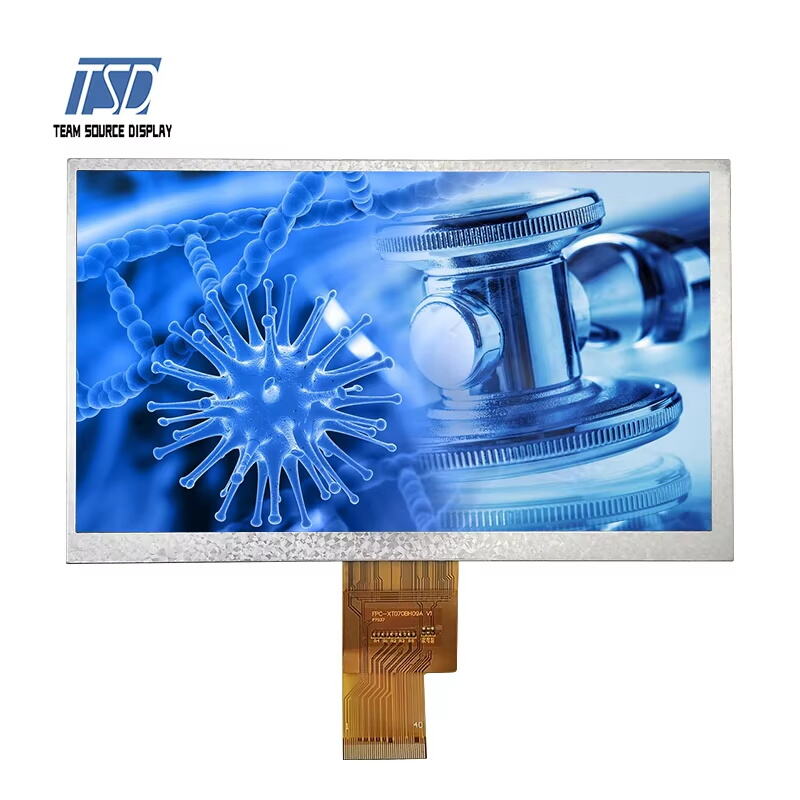Understanding Modern Display Technology Preferences
The evolution of display technology has transformed how we interact with our digital devices. Today's consumers are increasingly conscious about color screen features, making informed decisions based on various display specifications and capabilities. From smartphones to laptops and professional monitors, the quality of color reproduction and display features significantly influences purchasing decisions.
Modern display technology offers an unprecedented range of color screen features that cater to diverse user needs. Whether it's for gaming, content creation, or everyday use, consumers now have specific expectations about their display's performance. The market has responded with innovations that push the boundaries of what's possible in color reproduction and visual experience.
Essential Color Display Technologies
Advanced Color Gamut Standards
The foundation of superior color display lies in the color gamut coverage. Professional users and enthusiasts particularly value displays that offer extensive coverage of industry-standard color spaces like sRGB, Adobe RGB, and DCI-P3. Modern screens featuring wide color gamuts can reproduce more vibrant and accurate colors, making them essential for creative professionals and content creators.
Manufacturers are increasingly focusing on implementing color screen features that support multiple color spaces simultaneously. This versatility allows users to switch between different color profiles depending on their current task, whether it's photo editing, video production, or casual content consumption.
HDR Implementation and Standards
High Dynamic Range (HDR) has become one of the most sought-after color screen features in recent years. Consumers are drawn to the enhanced contrast ratios and broader color spectrum that HDR technology offers. Different HDR standards like HDR10, Dolby Vision, and HLG provide varying levels of color depth and brightness control.
The implementation of HDR technology has evolved significantly, with manufacturers offering increasingly sophisticated solutions for managing brightness levels and color accuracy. Advanced local dimming capabilities and improved backlight systems contribute to a more immersive viewing experience.

Color Accuracy and Calibration Features
Factory Calibration Benefits
Professional-grade displays often come with factory calibration, a feature highly valued by creative professionals. This pre-calibrated state ensures accurate color reproduction right out of the box, saving time and resources for users who depend on color accuracy for their work. The inclusion of calibration certificates and guaranteed Delta E values has become a significant selling point.
Modern displays increasingly include built-in calibration tools and software integration capabilities. These color screen features allow users to maintain optimal color accuracy throughout the display's lifetime, ensuring consistent performance for critical color work.
User Customization Options
Customizable color profiles and user-specific calibration options have become essential features in modern displays. Consumers appreciate the ability to fine-tune their display's color output according to their preferences or specific workflow requirements. Advanced options for temperature adjustment, gamma correction, and RGB balance provide unprecedented control over the visual experience.
The integration of smart calibration systems that can automatically adjust display parameters based on ambient lighting conditions represents the latest evolution in color screen features. This technology ensures optimal viewing experiences across different environmental conditions.
Advanced Color Enhancement Technologies
Quantum Dot Innovation
Quantum dot technology has revolutionized color reproduction in modern displays. This innovative technology enables screens to produce more vibrant and accurate colors while maintaining energy efficiency. The implementation of quantum dots has become increasingly sophisticated, with manufacturers developing new ways to enhance color purity and brightness.
The latest generations of quantum dot displays offer expanded color volumes and improved color stability over time. These advancements have made quantum dot technology one of the most desirable color screen features for high-end consumer displays.
AI-Powered Color Enhancement
Artificial intelligence has entered the display technology arena, offering smart color enhancement features that optimize visual output in real-time. AI-powered systems can analyze content and adjust color parameters to deliver the best possible image quality for different types of content.
Machine learning algorithms continue to improve color processing capabilities, enabling displays to offer more sophisticated color enhancement features. These systems can now recognize different types of content and apply appropriate color optimizations automatically.
Future Trends in Display Technology
Emerging Color Technologies
The future of display technology promises even more advanced color screen features. Research into micro-LED and advanced OLED technologies suggests significant improvements in color accuracy, brightness, and energy efficiency. These developments will likely reshape consumer expectations for display quality.
New color management systems utilizing advanced algorithms and improved hardware capabilities are under development. These innovations aim to provide even more precise control over color reproduction while simplifying the user experience.
Sustainability Considerations
Environmental consciousness is influencing the development of color display technologies. Manufacturers are focusing on creating energy-efficient displays that maintain excellent color performance while reducing power consumption. The integration of ambient light sensors and smart power management systems helps optimize display performance and energy usage.
Future display technologies will likely emphasize sustainable manufacturing processes and materials while continuing to advance color reproduction capabilities. This balance between performance and environmental responsibility is becoming increasingly important to consumers.
Frequently Asked Questions
What makes a display's color accuracy professional-grade?
Professional-grade color accuracy typically involves comprehensive coverage of standard color spaces (sRGB, Adobe RGB, DCI-P3), factory calibration with Delta E values below 2, and consistent color reproduction across the entire display surface. Additional features like hardware calibration support and color uniformity compensation also contribute to professional-grade performance.
How important is HDR for everyday users?
HDR significantly enhances the viewing experience for everyday users by providing better contrast, more vibrant colors, and improved detail in both bright and dark scenes. While professional HDR features might be overkill for casual use, basic HDR support can notably improve the enjoyment of movies, games, and other multimedia content.
Can quantum dot displays maintain their color quality over time?
Modern quantum dot displays are designed to maintain their color performance for extended periods. Advanced manufacturing techniques and materials have significantly improved the longevity of quantum dot technology, with many displays showing minimal color degradation over their typical lifespan. Regular calibration can help maintain optimal color accuracy throughout the display's life.




